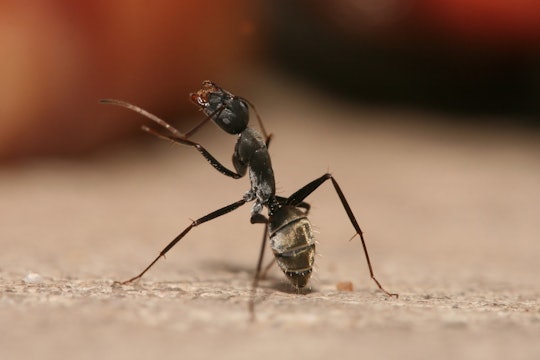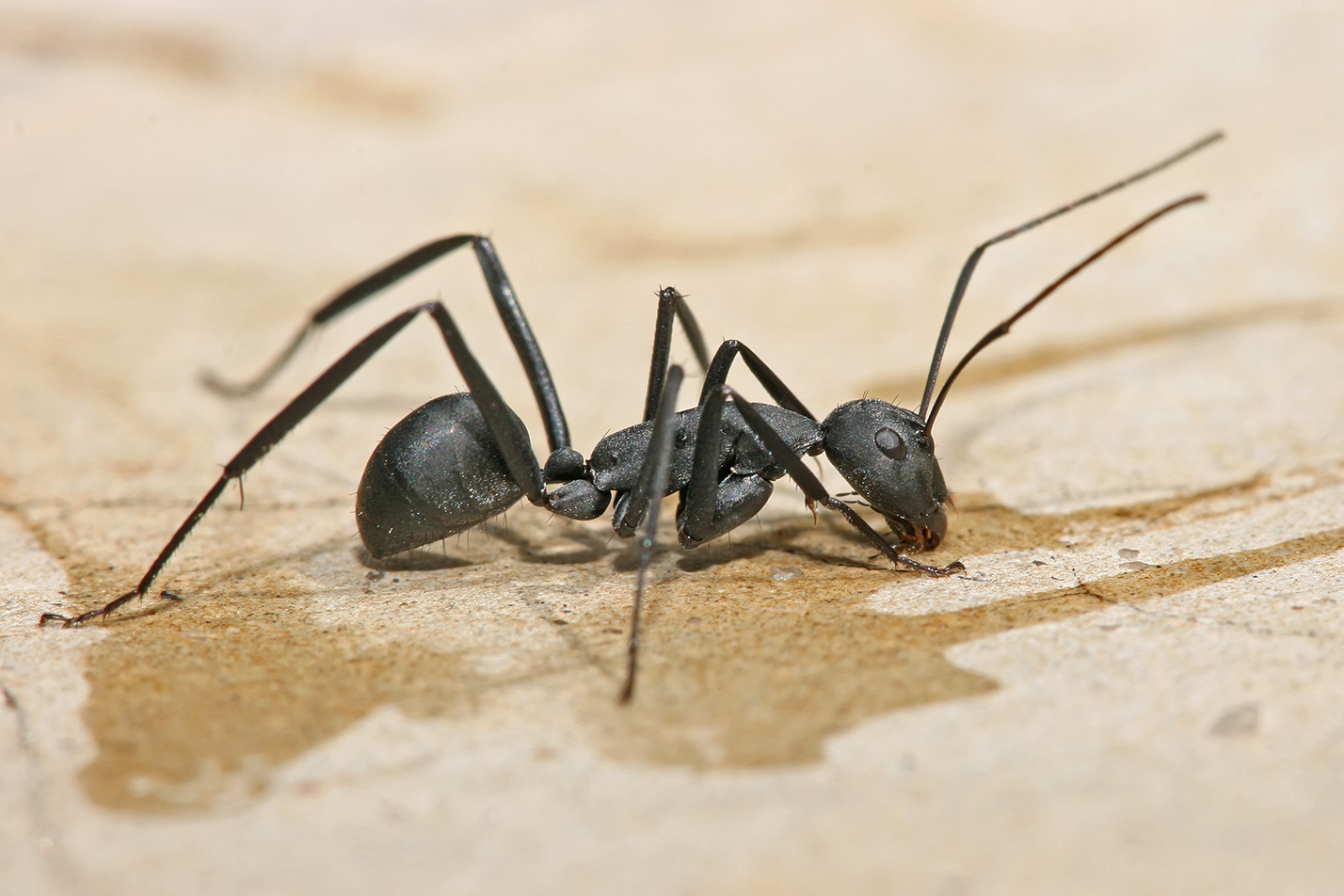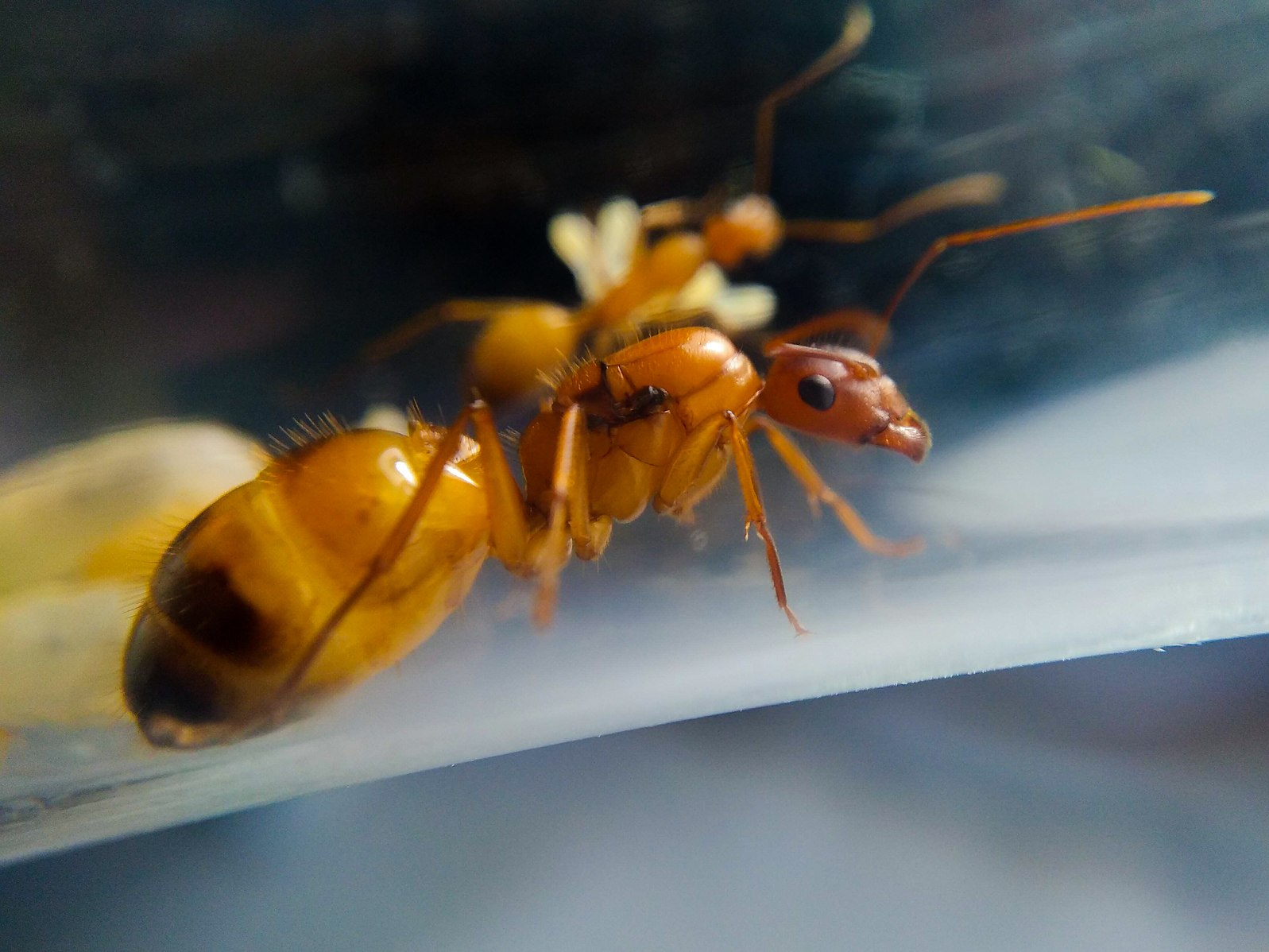
Muhammed Mahdi Karim via Wikimedia
Ants swallow their own acidic venom to filter their gut microbiome
Spitting formic acid isn’t just a defense mechanism, it’s also a disinfectant
Microorganisms can be many things to ants. They can be food for ants or even turn them into zombies. By reading their genomes, scientists have found that ants and microbes have been associated with each other for millions of years. Unfortunately, we know very little about how these ant-bacteria partnerships are made in the first place.
A new study published in the journal eLife showed that some ants might be using a formic acid-laced venom to filter out harmful bacteria from food, helping them control which bacteria reach their guts. Formicine ants, named for the formic acid in their venom, use the substance to disinfect their food. In doing so, they also seem to allow acid-tolerant bacteria to pass through to their guts.
To figure out how the ants were letting some bacteria pass through and stopping others, the scientists looked at two main structures of the digestive tract: the crop and the midgut. The crop is a structure very similar to human stomachs, in which insects store food before breaking it down. The midgut is like the small intestine, where a lot of the early digestive processes happen. The researchers first checked the acidity levels of crops in ants from seven different formicine species. They painstakingly dissected out the crops from individual ants, emptied the contents of the crops into small containers, and measured the acidity of the contents.
Across the board, they saw that the crops were always acidic, maintained at a pH between 2 and 4. This low pH, however, was limited to the crop and did not extend to the midgut. Differences in pH between the stomach and intestine are not uncommon (in humans, the pH changes rather drastically from 2 in the stomach to 6 in the small intestine), but the mechanisms for maintaining this difference vary across organisms. For ants in particular, no one really knows how this is achieved.

A carpenter ant
Muhammed Mahdi Karim via Wikimedia
The scientists then tried to figure out the source of the acid. Were the ants actively maintaining the pH, or was it just their physiology (as in humans)? To test this, the researchers physically restrained the ants by placing them inside tiny micropipette tips. This would stop the ants from reaching their acidopores, the venom-producing glands present on the ants’ backsides. Formicine ants do something called acidopore grooming, where they repeatedly stroke these glands and coax the venom out. When the researchers straitjacketed the ants, they saw that the pH of the crops increased. This told them that the low pH was actively maintained by the ants through acidopore grooming. The ants were effectively swallowing venom from the glands and using it to acidify their crops.
The team next checked whether this level of acidity could actually kill pathogens. They fed ants food tainted with Serratia marcescens, a bacterium known to be lethal to ants even in very small doses. They then dissected out the ants’ midguts at different time points post-feeding and tried to revive the bacteria. The researchers saw that, within an hour, barely any S. marcescens made it to the midgut.
They next divided the ants into two groups as before, with one allowed to perform acidopore grooming and the other not, and again fed them contaminated food. The ants that were allowed free access to their acidopores survived better than their restrained counterparts, implying that the acidic venom gave the ants a survival advantage.
Aside from feeding themselves, ants also feed others in the colony through a behavior called trophallaxis. Sharing food is ripe ground for spreading infections that can potentially wipe out colonies, and the researchers were curious to see how the ants handled this risk. So they did “probably the one experiment [that] I enjoyed most,” said Simon Tragust, the lead author of the study.
They made two kinds of donor-receiver ant pairs. In the first, the donor ants were allowed free access to their acidopores, whereas the receiver ants had their acidopores glued shut. In the second, both the donor and receiver ants’ acidopores were glued shut. The scientists then fed the pairs with S. marcescens-tainted food and monitored their survival. They saw that the pair in which the donors could perform acidopore grooming survived better than the one in which both parties were prevented from doing so.
“[It] has [been] shown that if food comes via trophallaxis, it is passed way more quickly from the crop to the midgut. This might explain why an acidic crop is such a good defense,” said Tragust.
Having shown that ant venom could kill pathogens, the researchers turned their attention to bacteria that could withstand the acid. They fed ants food containing bacteria from the genus Asaia, which belongs the Acetobacteraceae family and is known to colonize the guts of different insects. As in the experiments with S. marcescens, they dissected out the midgut and examined whether they could revive any Asaia bacteria from it. Unlike with S. marcescens, the researchers were able to culture Asaia from the midgut even as long as 48 hours after feeding.

A queen of the ant species Camponotus pilicornis
Via Wikimedia
“Acetobacteraceae are present in very sugary solutions, nectar, rotting fruits and stuff like that. And what do ants like to eat? Sugary solutions. So it's no wonder that there is this association. But the question is, how did it get started? And how can you maintain it? And we might have an idea in that direction with this data,” said Tragust.
Through these experiments, the scientists were able to show two new functions of ant venom, previously thought solely to protect from predators and the like. The formic acid-laden venom not only clears off pathogens, but also selectively allows acid-tolerant bacteria to pass from the food to the midgut.
In the future, Tragust wants to follow up on a curious observation: the pH levels across different ant species, although all acidic, varied widely.
“Why do certain formicine ant species [have] different acidity levels in their stomachs? There might be a phylogenetic signal in there, or it might just correlate with behavior or the poison itself,” he said. “There is a whole world to go into if one would really want to go into details.”
